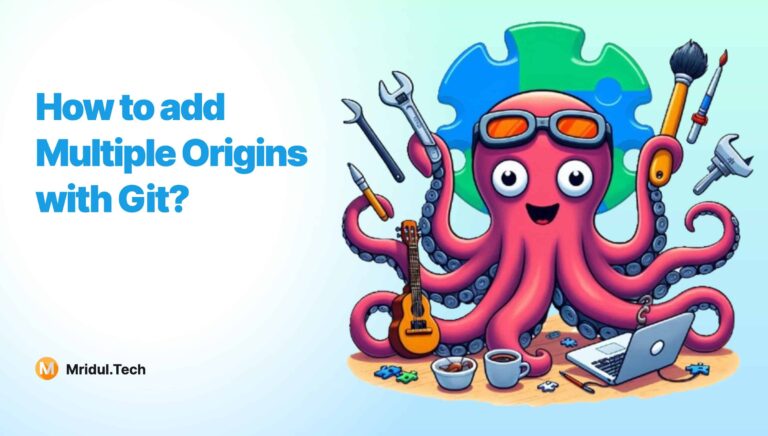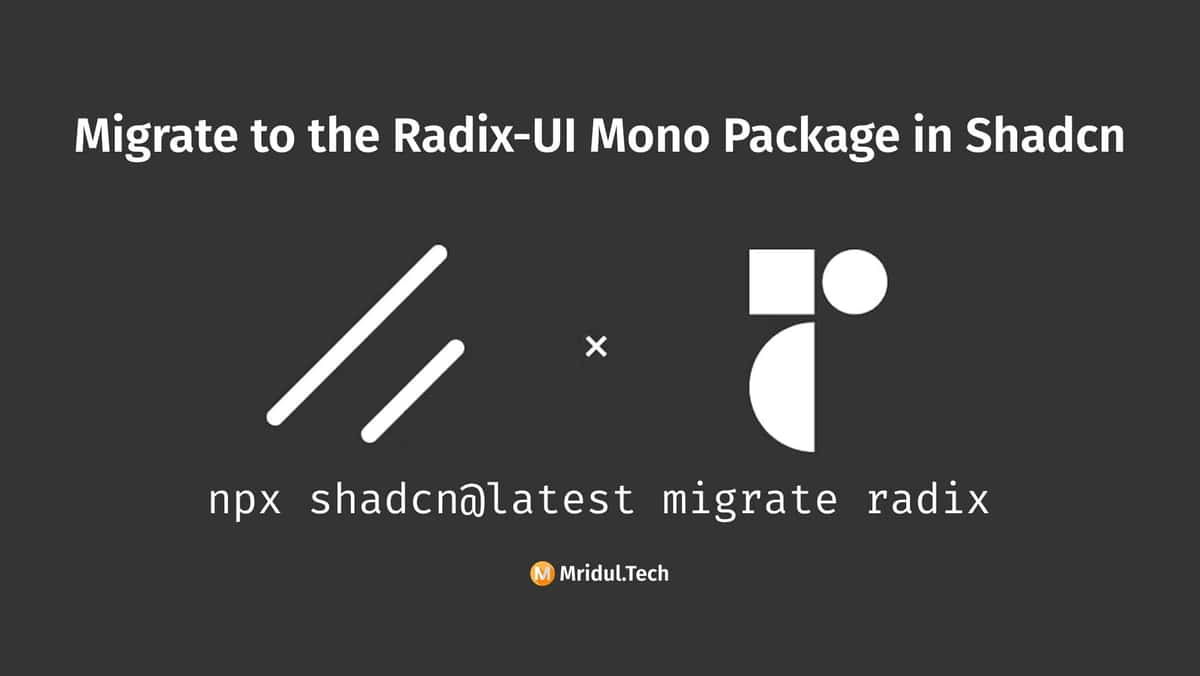The world of frontend UI libraries continues to evolve at a rapid pace. Developers now demand better tooling, cleaner APIs, and improved developer experience. That’s why the ShadCN UI library just made a massive leap forward. With a single command, You can seamlessly migrate to the new Radix-UI mono package structure with zero breaking changes. Whether you’re building scalable design systems or crafting minimal interfaces, this transition simplifies your workflow dramatically.
npx shadcn@latest migrate radixWhat Is the Radix-UI Mono Package?
Radix UI, known for its unstyled, accessible components, has now consolidated its scattered packages into a mono package. The shift from separate component-based packages (e.g., @radix-ui/react-dialog) to a unified radix-ui mono package reduces dependency clutter and improves maintainability.
This change empowers developers to import components faster, manage dependencies efficiently, and align their projects with modern modular standards.
Radix-UI Mono Package One-Command Migration: How It Works
By simply running:
npx shadcn@latest migrate radixYou can:
- Automatically refactor all your import statements.
- Transition from individual
@radix-ui/react-*packages to the newradix-uisource. - Maintain full backward compatibility with your existing UI setup.
- Avoid manual, error-prone edits across your codebase.
Before: Traditional Radix Imports
import * as AlertDialogPrimitive from "@radix-ui/react-alert-dialog";
import * as DropdownMenuPrimitive from "@radix-ui/react-dropdown-menu";After: Radix-UI Mono Package Imports
import { AlertDialog as AlertDialogPrimitive } from "radix-ui";
import { DropdownMenu as DropdownMenuPrimitive } from "radix-ui";Also Read: Best Chrome Extensions for Web Developers
Deep Dive into Package Differences
Let’s compare the old and new structure to understand the migration’s full benefit.
Old Pattern
- Multiple NPM packages (e.g.,
@radix-ui/react-tabs,@radix-ui/react-tooltip, etc.) - Redundant versioning efforts.
- Tedious import declarations.
Also Read: Next JS Project Ideas to Boost Your Portfolio
New Mono Package
- Single source:
radix-ui - Simplified version control.
- Streamlined importing, especially when used with ShadCN UI.
- Easier tree-shaking for production builds.
Also Read: React Hooks Cheatsheet
Real-World Migration Example
Assume you’ve used multiple Radix primitives in your project:
import * as Popover from "@radix-ui/react-popover";
import * as Dialog from "@radix-ui/react-dialog";
import * as Toggle from "@radix-ui/react-toggle";After migration, it becomes:
import { Popover, Dialog, Toggle } from "radix-ui";No need to manage individual packages or update them separately. You gain all of the following benefits in one move:
- Code clarity
- Faster onboarding for new developers
- Less cognitive load when importing and maintaining components
Post-Migration Optimization Tips
After a successful migration, consider these next steps:
- Update Radix-related dependencies to the latest versions.
- Refactor internal wrappers or custom hooks if they rely on old import patterns.
- Enable tree-shaking in your build process to reduce bundle size.
- Clean unused packages with tools like
npm-checkordepcheck.
You may also like
Top Bulk QR Code Generator of 2025

Apr 28, 2025
·3 Min Read
In the digital era, QR codes have become indispensable tools for businesses, marketers, educators, and event organizers. Generating them in bulk can save time, increase efficiency, and streamline processes. We have curated a comprehensive Top Bulk QR Code Generator of 2025 available today to help you choose the perfect tool. What is a Bulk QR […]
Read More
How to add Multiple Origins with Git?

Nov 24, 2024
·3 Min Read
Git has become the backbone of modern software development due to its versatility and powerful version control features. But did you know you can add multiple origins with Git repositories? Whether you’re juggling projects across platforms or collaborating on multiple forks, this feature can save you time and improve your workflow. What Are Git Origins? […]
Read More
Best Chrome Extensions for Web Developers

Mar 12, 2023
·4 Min Read
As a web developer, you already know how time-consuming it can be to switch between different tools and applications to get your work done. However, with the right Chrome extensions, you can save time, increase productivity, and streamline your workflow. In this article, we’ll explore the best Chrome extensions for web developers that you can […]
Read More



